
Guide
Practical rugs for inside and out
by Pia Seidel
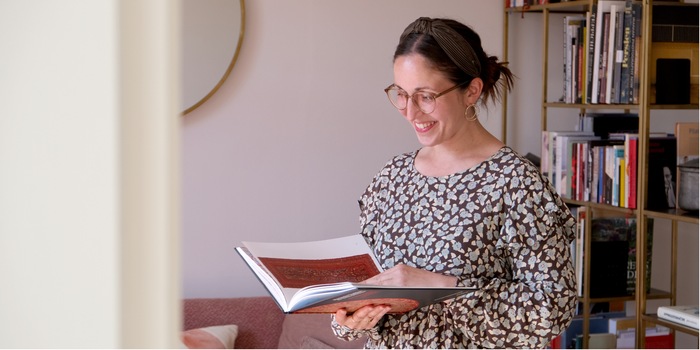
Thinking of getting a new rug, but don’t know where to start in your search? Interior designer Neshat Compani reveals her approach and what to look out for.
This apartment in Basel is chock full of moving boxes. Interior designer Neshat Compani recently moved in with her family. All the carpets catch my eye. The carefully woven mini rhombus design is especially appealing to me. And the softness of the other carpets feels wonderful to my bare feet. Although nothing is finished yet, everything looks cosy. This is probably because Neshat has a lot of experience designing spaces. She regularly selects rugs, among other things, for her interior projects and also owns a lot privately – ranging from kilims to outdoor carpets. I want to know from the expert how she built up her own little collection and how she showcases it.
Neshat, when you showed me around the apartment, the first thing I noticed were the Persian rugs.
Neshat Compani: Yes, my family owns many old Persian rugs from different regions. Among them beautiful kilims with floral motifs, which my father brought with him. He’s originally from Iran and now lives in Frankfurt, where I grew up. Some of the carpets have unfortunately been in the basement since the move.
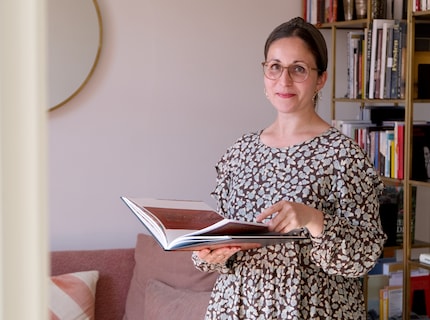
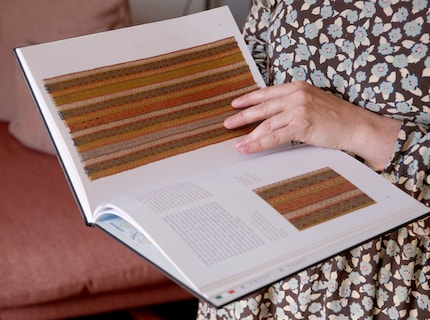
How do you showcase Persian carpets?
In the Orient, you usually place the carpet in the centre of the room. That’s why my father always wanted to put the furniture against the wall so the rug would be in the centre. Since the motifs convey messages, you should be able to see them, he always said. My mother and I intervened because the space was limited. Even today, I use rugs primarily to add structure to rooms and make them feel more homey. That’s why I tend to place furniture on the carpet.
I currently own only one carpet. I would like to change that. But the selection is huge, and I’m having trouble choosing. How do you go about finding new carpets?
First, I look at the floor plan of the room and the furniture in it. Then I measure everything. Choosing a carpet is so much easier if you already know which size you’re looking for. Then I look at the colour, pattern and quality. No matter how beautiful the design is – the proportions have to be right. Otherwise, the carpet ruins the ambience. If I really like a carpet and can’t find the right size, I order it custom-sized. It just costs a bit more than a regular premade carpet.
Finding the right proportions sounds easy enough. How do I find out what fits where?
Structure your living space into «islands». Think of the carpet and the furniture as one unit. Although my father would say the opposite, a carpet looks more harmonious and less lost if there’s a piece of furniture on it. For example, I put the rug underneath the couch so it doesn’t look too short or out of place. Depending on the type of carpet, it should have at least ten centimetres of overlap with the furniture.
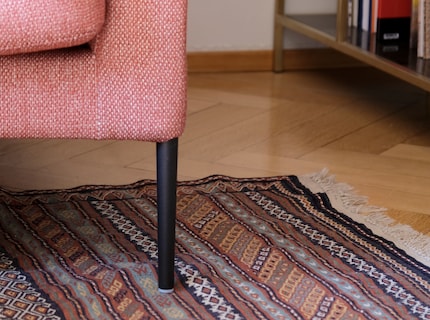
The only carpet in my house is in front of the couch. Visually, both elements form a unit. But the couch legs don’t do much for the carpet in terms of stability and slipperiness. How do you prevent slipping on hardwood floors?
There are so-called anti-slip mats that keep the carpet on the floor. You can use them for all types of carpets. They also prevent wrinkles from forming. It’s a big plus when it comes to thinner fabrics such as a kilim.
What other «living islands» do you create?
I have carpets not only indoors, but also outdoors. Under the garden table or in my son’s play corner. It gives him something warm to sit on.
The carpets in the play corner have different heights. How do you decide on high or low pile carpets?
High-pile rugs are the best option for places where you’re mostly barefoot. In the bedroom, they make fora pleasant start to your day. In the nursery, they’re great, too, since a lot of time is spent on the floor. However, they require more care than low pile carpets. For example, dents left by furniture are inevitable. You can combat them by regularly rearranging the furniture or with preventive measures such as felt glides.
You said earlier that you choose colour and pattern after the size. How do you go about it?
It rarely happens that the first furniture item you have is the carpet. I first look at the colours and things that are already in the room. In my son’s nursery, the toys, furniture and walls are already colourful - an embroidered tapestry I’ve had since childhood adorns the wall. That’s why I chose a monochrome carpet. If there are a lot of pictures on the walls, I stick to simple carpets. By doing so, the carpet and the art don’t compete with each other.
If the room decor is rather simple in terms of colour and pattern, the carpet can be the statement piece and attract attention. The same applies to neutral floors, such as concrete or hardwood. On those, patterned kilims and alike truly shine. Then I make sure that some of the carpet colours reappear somewhere in the room. In my living room, the reddish rug matches the pink sofa because both tones belong to the same colour scheme.
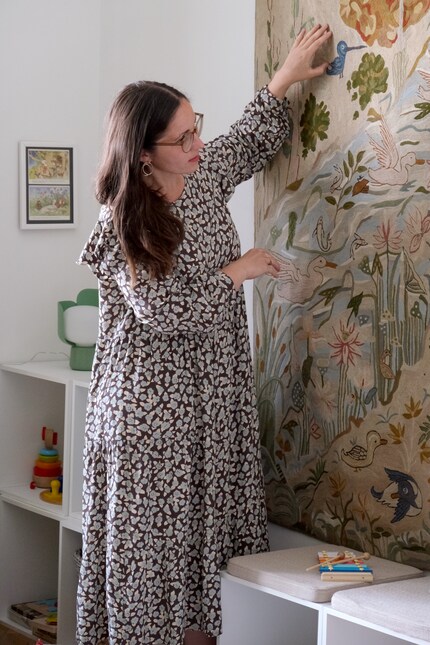
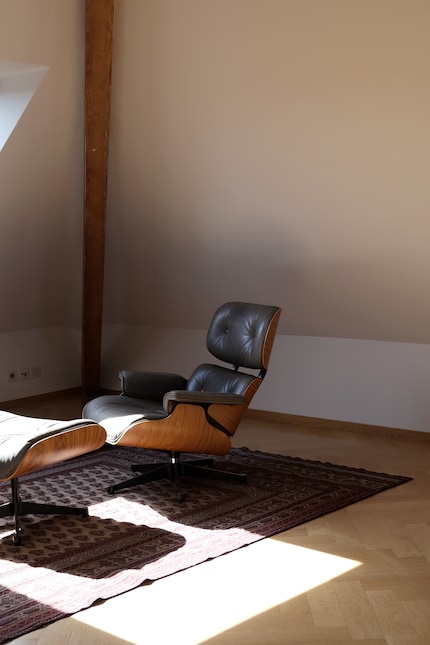
Have you ever made a bad purchase?
Recently, I was blinded by aesthetics. The carpet in the nursery is falling apart. It’s anything but high-pile now. It’s only glued instead of woven. My son pulls out the individual threads and plays with them (laughs). Some carpets are cheap for a reason, so take a closer look at the way they’re made.
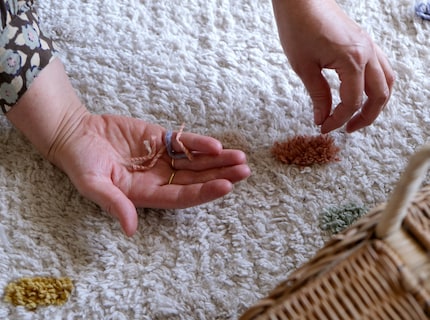
My rooms echo, although there’s furniture in them. Are there carpets that provide better acoustics?
Yes, the higher the pile of the carpet, the more it absorbs footstep noise. This is good in the bedroom or in the entrance hall. Curtains absorb more of conversational noise, though, since they hang higher.
What is important concerning material?
For outdoor rugs, I find it important that they’re water-repellent and ideally can be cleaned with water only. This is typically the case with synthetic fabrics such as polypropylene. Of course, it’s even better, if they fit in the washing machine. Indoors, I prefer wool and silk carpets. They’re also water repellent, repel dirt well and don’t build up static electricity. You also sweat less on them than on artificial fabrics.
I would prefer machine washable options to save me from having to clean by hand. How would you arrange them?
Small carpets look nice overlapped. By doing so, they become one whole unit. It also has the advantage that you don’t have to choose just one pattern and can at least somewhat escape the agony of choice.
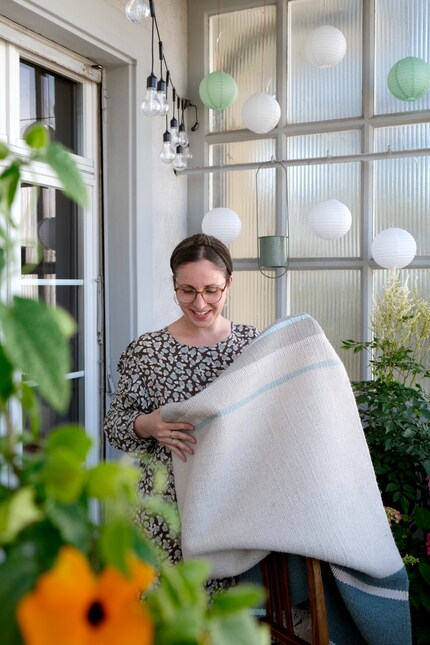
Like a cheerleader, I love celebrating good design and bringing you closer to everything furniture- and interior design- related. I regularly curate simple yet sophisticated interior ideas, report on trends and interview creative minds about their work.
Practical solutions for everyday problems with technology, household hacks and much more.
Show all